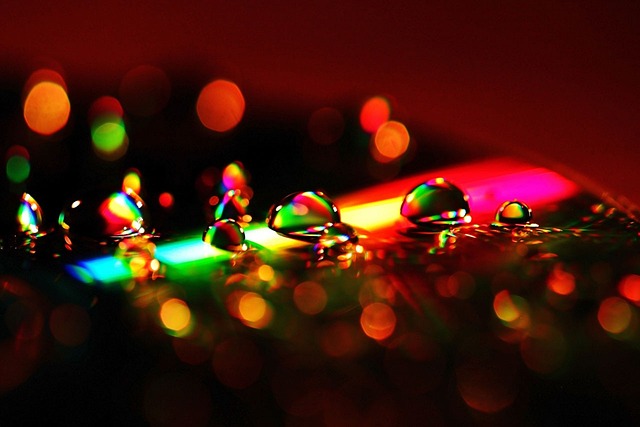
Applications of Diffraction Gratings
Diffraction gratings separate incident light into different wavelengths by passing it through a narrow slit, which causes the light wave to ‘bend’ and disperse.
The principle is similar to refraction, but instead of being caused by the wave passing through a material of different density, it occurs whenever a beam of light passes close by a physical object, or through a slit.
A main application of diffraction gratings is in spectrometers, where each distinct wavelength in the incident light is directed to a different output angle. This angular dispersion allows for selection of specific frequencies in the output.
In this guide, we will look more closely at diffraction gratings and applications, along with some of the science behind how diffraction gratings work.
The discovery of diffraction
The discovery of diffraction is one of the most celebrated experiments in the history of scientific research.
In 1801, the British polymath Thomas Young demonstrated that when light passes through two parallel adjacent slits, it forms an interference pattern on a screen placed behind the slits.
As well as showing how light disperses when passing through a narrow slit, Young’s double slits experiment was a precursor to the wave-particle duality of light that underpins modern quantum physics theories.
How does diffraction work?
Diffraction causes light to bend, or disperse, as it passes an edge or an aperture. A simple example of this is to shine a bright torch through a doorway.
Instead of seeing a sharp boundary between the torchlight and the shadow cast by the wall, you will instead see a gradual fade from the bright area to the shadow.
This blurred edge is caused by diffraction as the torchlight passes through the doorway. Diffraction is greatest when a coherent light source passes through an aperture similar in size to its own wavelength, which can cause a narrow beam to spread out to become semi-circular in shape.
Diffraction is also responsible for the rainbow-coloured reflections seen on the data surface of a compact disc, which are a result of white light diffracting from the closely spaced data track of the CD.
It is worth noting that unlike in a prism, which creates a rainbow by bending violet light the most, a diffraction grating instead bends the red light the furthest.
Diffraction grating uses
There are many diffraction grating uses in physics, including in spectrometry to obtain line spectra from a light source and to measure the wavelengths of spectral lines.
Applications of diffraction gratings include the full range of spectrometry instruments, such as monochromators and spectrophotometers.
Unlike prisms, diffraction gratings do not absorb infrared or ultraviolet wavelengths, making them the preferable option for applications at the edge of the visible light spectrum.
Types of diffraction gratings and applications
Diffraction grating uses depend on the type and structure of the grating, which fall broadly into four categories.
Reflection Gratings
Reflective diffraction gratings feature a metallic layer deposited onto an optic substrate, with parallel grooves etched into the surface.
Like the rainbows seen on a CD, the incident light reflects off the surface according to diffraction, such that different wavelengths have a different angle of reflection.
Ruled Gratings
Ruled gratings contain parallel grooves etched into a surface. The dimensions of these grooves can be such that diffraction is maximised at a specific wavelength – known as ‘blazing’.
A blazed ruled grating has maximum effect over a narrow wavelength, making it useful in applications like monochromators where a specific frequency of light must be selected.
Transmission Gratings
Transmission gratings are similar to ruled gratings, except that they work via transmission through a transparent substrate, instead of by reflection.
Whereas a reflection grating is sensitive to polarisation, transmission gratings are not, allowing them to be used in applications where the polarisation of the light source is random, variable and/or unknown.
Applications of transmission gratings include compact in-line use, where the light source passes directly through the grating, which again is good for monochromators and general spectrometers.
Holographic Gratings
Holographic gratings use a photolithographic principle to cause interference between multiple beams passing through an optical filter.
Compared with ruled gratings, holographic gratings typically have lower efficiency but also create less stray light, making them useful for applications where minimal stray light is desired.
Spectrometry applications of diffraction gratings
As discussed, there are many different diffraction grating uses across the field of spectrometry.
Some examples of diffraction grating uses include:
- Lasers
- Monochromators
- Optical instruments
- Pulse compression
- Spectrophotometers
- Wavelength division multiplexing
Lasers
Diffraction gratings can be used in the wavelength tuning of a laser light source, ensuring that the output beam is closely calibrated to a specific frequency of EM radiation.
Monochromators
Like a laser, monochromators filter light down to a narrow band of wavelengths. This is valuable in spectrometry tools that require a tunable monochromatic signal.
Optical Instruments
Diffraction gratings – especially holographic gratings – are used throughout optical communications with high performance, and on near-IR wavelengths in industrial instrumentation with good environmental resistance.
Pulse Compression
Pulse compression in laser material processing has emerged as a particular application of diffraction gratings, with uses in healthcare for cornea correction and in the semiconductor industry.
High-purity silica works well at specific laser wavelengths, giving precise output in all applications.
Find out more
If you have any questions about diffraction gratings or any other optical filters supplied by Envin Scientific, please contact us to discuss your needs. We can recommend specific diffraction gratings for different applications and/or bespoke optical filters where necessary.
All our optical filters are tested and performance-qualified using industry-standard spectrophotometers including Perkin Elmer Lambda900 and 983G spectrometers.
We file all testing data electronically with unique reference numbers for specific machine runs and process logs, ensuring that all test results are easily traceable.
To discuss your needs – including any preferences with regard to substrate material and diffraction grating type – get in touch with Envin Scientific today.

